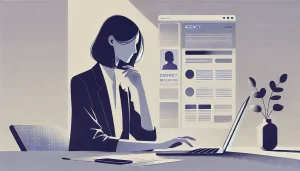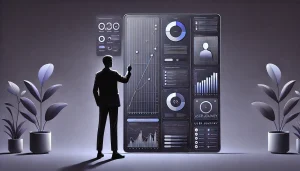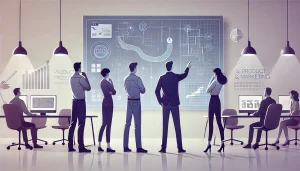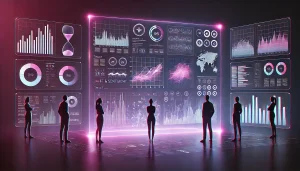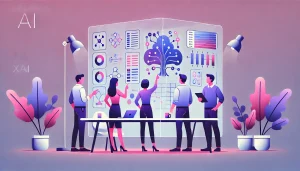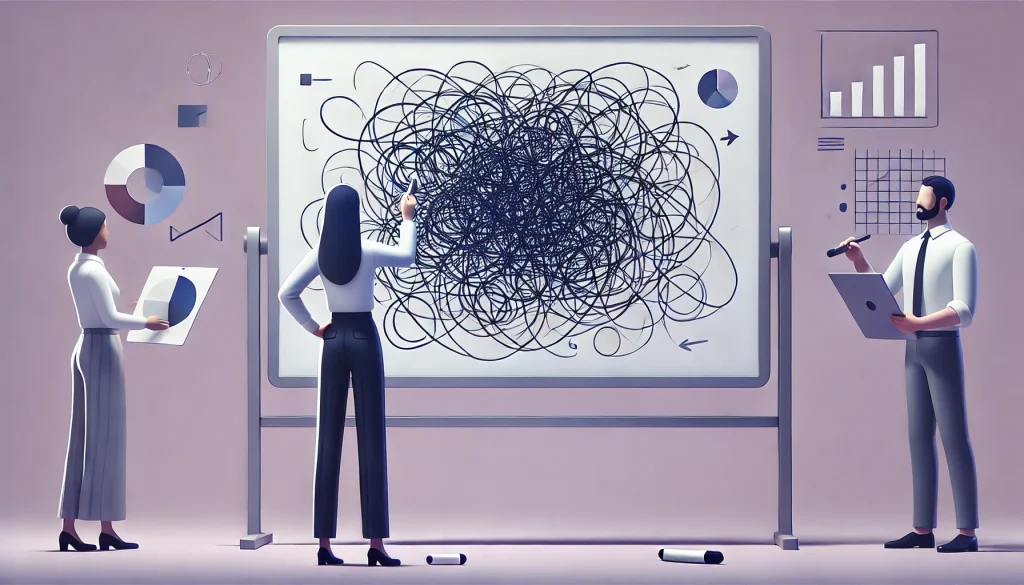
Ever used an app so frustrating you just gave up? Now, imagine that’s your app. That’s the multi-billion dollar problem bad UX creates. But finding the right design partner to fix it feels just as hard.
Hiring a UI/UX agency is a high-stakes, expensive decision, especially in India’s vast and varied market. With hundreds of agencies claiming to be “user-centered” and “strategic,” how do you separate the truly great from the merely good-looking?
In today’s blog we’ll give you the checklist, the questions, and the red flags to look for. By the end of this guide, you won’t just hire an agency; you’ll find a long-term partner who understands your business, challenges your assumptions, and connects design directly to your bottom line.
When Do You Really Need to Hire a UI/UX Agency?

Not every design problem requires an agency. Sometimes a freelancer works. Sometimes your in-house team can handle it. But there are clear signals that it’s time to bring in the experts.
Here are 5 Signs You’ve Outgrown In-House or Freelancers
- Your product feels “stitched together” rather than cohesive. Different features have different design languages, and the user experience feels fragmented.
- You lack a dedicated research process. You’re making design decisions based on opinions around the conference table, not real user data.
- Your team is at capacity. Your designers are buried in feature work and can’t step back to think strategically about the overall experience.
- You need specialized expertise. Industries like FinTech, HealthTech, or complex B2B SaaS platforms require designers who’ve solved similar problems before.
- You’re launching something critical. A new product, a major redesign, or entering a new market – these aren’t the moments to learn on the job.
Agency vs. Freelancer vs. In-House: An Honest Comparison
| Option | Pros | Cons | Best For |
| Freelancer | Cost-effective, fast to hire, flexible | Limited capacity, no team backup, may lack specialized skills | Small projects, tactical work, tight budgets |
| In-House Team | Deep product knowledge, always available, aligned with culture | Expensive to maintain, limited external perspective, skill gaps | Ongoing product development, large companies |
| Agency | Full team, diverse expertise, proven process, external perspective | Higher cost, requires clear communication, less day-to-day availability | Strategic projects, specialized needs, when you need results fast |
Before you go further, if you’re still making the business case, see our guide on why great UX is the best investment you’ll make this year.
The Ultimate UI/UX Agency Hiring Checklist
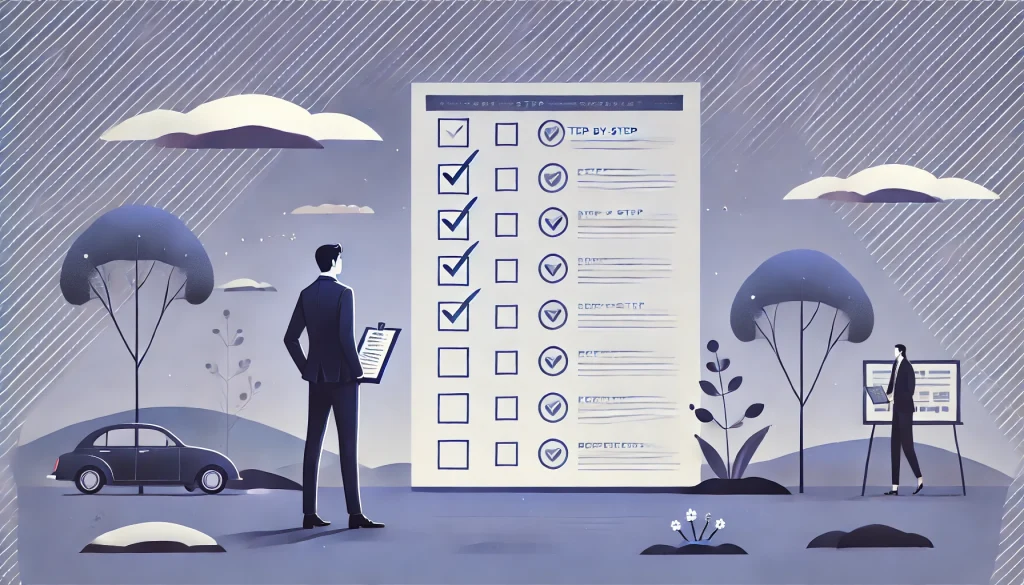
This is your step-by-step roadmap. Follow it, and you’ll avoid the most common hiring mistakes.
Phase 1: Before You Search
1. Define Your “Why”
Don’t start with “I need an app” or “our website is outdated.” Start with the business problem: Are users abandoning their carts? Is onboarding too complex? Are you losing customers to competitors with better UX?
2. Set a Realistic Budget
You don’t need exact numbers yet, but know your range. A quality agency for a meaningful project in India typically starts at ₹3,00,000 and can go well beyond ₹25,00,000 for complex platforms.
3. Know Your Internal Stakeholders
Who has the final say? Who needs to be involved in reviews? Get alignment now, or you’ll face delays later when stakeholders appear with conflicting opinions.
Phase 2: Finding & Shortlisting
4. Create a “Longlist”
Use Clutch, Behance, Google searches, and LinkedIn. Look for agencies that specialize in your industry or have solved similar problems. Aim for 10-15 agencies initially.
5. The 15-Minute Portfolio Test
Open their portfolio. Can you find detailed case studies (not just pretty pictures)? Do they show their process? Can you see measurable results? If you can’t find these in 15 minutes, move on. This should cut your list in half.
6. Create a “Shortlist” of 3-5 Agencies
These are the ones you’ll seriously engage with.
Phase 3: The Vetting Process
7. Send a Clear, Concise RFP
Don’t write a novel. One page that covers: your business challenge, your users, your goals, your timeline, and your budget range. A good agency will appreciate your clarity.
8. The “Chemistry Call”
This isn’t about slides. It’s about conversation. Are they asking you hard questions? Are they challenging any of your assumptions? Or are they just agreeing with everything? You want a partner, not a yes-man.
9. Check 2-3 Real References
Don’t skip this. Ask references: “What was the hardest part of working with them?” and “Would you hire them again, and why?”
Phase 4: The Decision
10. Review Proposals & SOWs
Compare apples-to-apples. What’s included? What’s not? How do they handle change requests? What are the payment milestones?
11. Sign the Contract & Kick-off
Congratulations. Now the real work begins.
How to Evaluate a UI/UX Portfolio (When You’re Not a Designer)
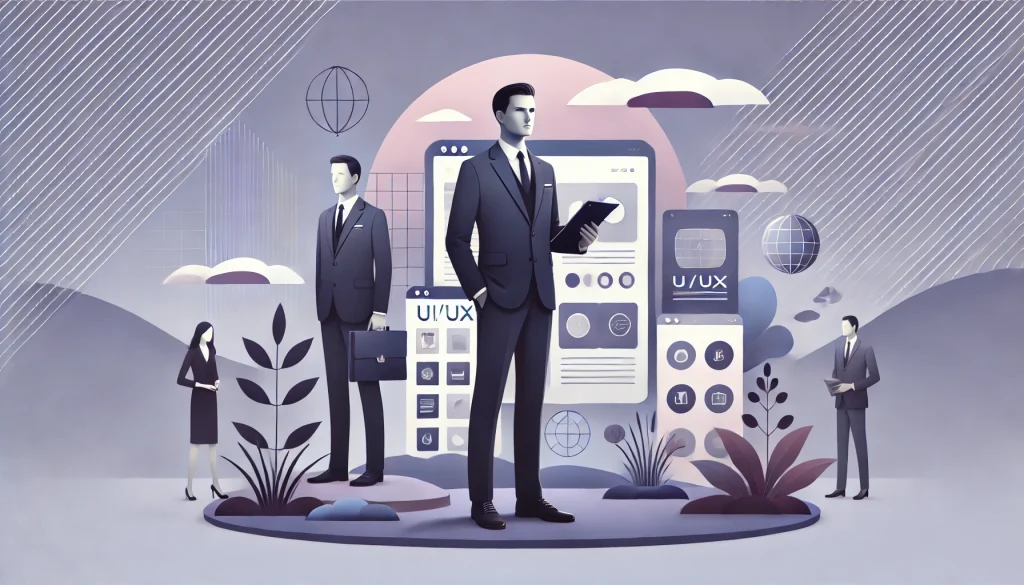
You’re a CEO, a product manager, or a founder – not a designer. How do you evaluate design work without just saying “I like this blue”?
Go Beyond “Pretty Pictures”: Look for Process
A great portfolio is a case study, not a gallery. The visuals matter, but what you really want to see is the story behind them. Where is the user research? The wireframes? The iterations? The testing results? If an agency only shows you polished final screens, they’re hiding the messy, valuable work that actually matters.
The Anatomy of a World-Class UI/UX Case Study
Every case study should include:
- The Problem: What business or user challenge were they solving?
- The Audience: Who are the users, and what do they need?
- The Process: What research did they do? How did they validate their ideas?
- The Challenges: What went wrong? What trade-offs did they make? (If they say “nothing went wrong,” they’re lying.)
- The Solution: What did they design, and why?
- The Impact: What changed? Did conversions increase? Did support tickets decrease? Did users complete tasks faster?
If a case study is missing any of these, it’s incomplete.
Are Their Designs Relevant to Your Industry?
A beautiful e-commerce portfolio might not translate to a complex B2B SaaS platform. An agency that crushes consumer apps might struggle with enterprise software that has 47 user roles and compliance requirements. Look for relevant experience, not just aesthetic appeal.
We’ve created a detailed scorecard to help. Check our full guide on how to shortlist and evaluate agency portfolios.
8 Red Flags That Scream “Run Away!”

Trust your instincts. If something feels off during the sales process, it will only get worse during the project.
1. A “Secret” or Vague Process
They can’t clearly explain how they work. They use buzzwords like “design thinking” and “human-centered” but can’t walk you through a real example. A confident agency has nothing to hide.
2. All “Yes Men”
A good partner pushes back and challenges your assumptions. If they agree with everything you say in the first call, they’re either inexperienced or just trying to close the deal.
3. A Portfolio of Unbuilt “Concept” Work
It looks stunning on Dribbble or Behance, but when you ask “Is this live?” they say “It was a concept project” or “The client didn’t build it yet.” Real work faces real constraints and real users.
4. Poor Communication During the Sales Process
Slow to respond? Vague answers? Missing meetings? This is them on their best behavior. It won’t improve once you’ve signed the contract.
5. They Only Let You Talk to the “Sales Guy”
Demand to meet the actual design lead who’ll work on your project. If they won’t let you, it’s because that person doesn’t exist yet – or worse, they’re overcommitted.
6. No Questions for You
Top agencies are selective. They should be interviewing you, too. If they’re not asking about your business model, your users, your constraints, or your definition of success, they’re just order-takers.
7. Mismatched Process & Culture
They follow a rigid waterfall process, but your dev team is agile. Or their communication style is all formal weekly reports, but you need a collaborative Slack channel where you can ping questions in real-time. These mismatches kill projects.
8. Vague or “Too Good to Be True” Pricing
“We can do that for ₹50,000” when everyone else quoted ₹5,00,000. Either they don’t understand the scope, or they’re planning to surprise you with change orders later.
Money Talk: Understanding Engagement Models & Agency Costs in India
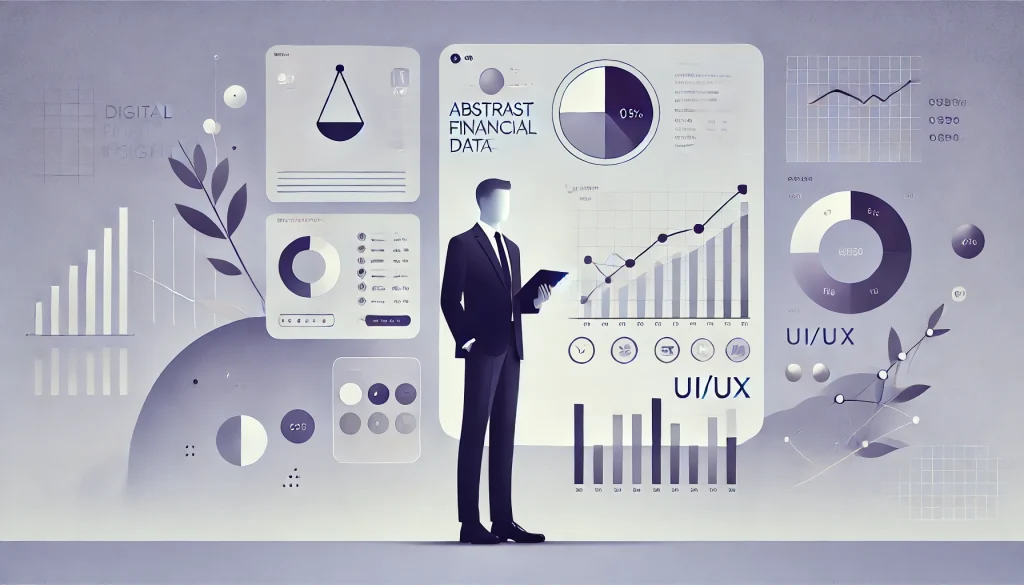
Let’s talk about what you’re actually going to pay, and why.
Model 1: Fixed Price
- How it works: You define the scope upfront. The agency gives you a single price for the entire project.
- Pros: Predictable budget. You know exactly what you’re spending.
- Cons: Inflexible. If you want to add features or change direction based on research findings, you’ll face change orders. Bad for complex projects where the scope will naturally evolve.
- Best for: Small, well-defined projects like a marketing website or a simple mobile app.
Model 2: Time & Materials (Hourly/Daily)
- How it works: You pay for the actual time the team spends. Agencies typically bill weekly or bi-weekly.
- Pros: Maximum flexibility. Perfect for agile development. You can pivot based on what you learn.
- Cons: Budget can spiral if not actively managed. Requires trust and clear communication.
- Best for: Complex projects, ongoing product development, or when you’re still figuring out the exact scope.
Model 3: Retainer (Your “On-Call” Design Team)
- How it works: You pay a fixed monthly fee for a set number of hours or a dedicated team member.
- Pros: Long-term partnership. The agency develops deep product knowledge. Faster turnaround since they’re always available.
- Cons: Monthly commitment. You’re paying even in slower months.
- Best for: Established products that need continuous design improvements, A/B testing, and optimization.
So, How Much Does a UI/UX Agency in India Actually Cost in 2025?
Here are real, data-driven ranges in 2025. Rates vary based on agency size, expertise, location, and your project complexity.
Boutique Agencies (5-15 people):
- Hourly rate: ₹2,000 – ₹5,000
- Small project (basic website, 5-10 screens): ₹2,00,000 – ₹5,00,000
- Medium project (mobile app, 15-25 screens): ₹6,00,000 – ₹12,00,000
Mid-Sized Agencies (15-50 people):
- Hourly rate: ₹4,000 – ₹8,000
- Small project: ₹4,00,000 – ₹7,00,000
- Medium project: ₹10,00,000 – ₹18,00,000
- Large project (complex SaaS platform, 50+ screens): ₹20,00,000 – ₹40,00,000
Top-Tier/Specialized Agencies (50+ people or elite boutiques):
- Hourly rate: ₹7,000 – ₹15,000+
- Small project: ₹6,00,000 – ₹10,00,000
- Medium project: ₹15,00,000 – ₹30,00,000
- Large project: ₹35,00,000 – ₹1,00,00,000+
What’s included? User research, personas, journey mapping, information architecture, wireframes, interactive prototypes, visual design, usability testing, design system documentation, and developer handoff.
What’s typically NOT included? Development/coding, content writing (beyond UX copy), ongoing maintenance, marketing, or analytics implementation.
For a complete breakdown of rates and what’s included, see our detailed guide to UI/UX design pricing and packages.
Setting Realistic Timelines: How Long Does UI/UX Really Take?
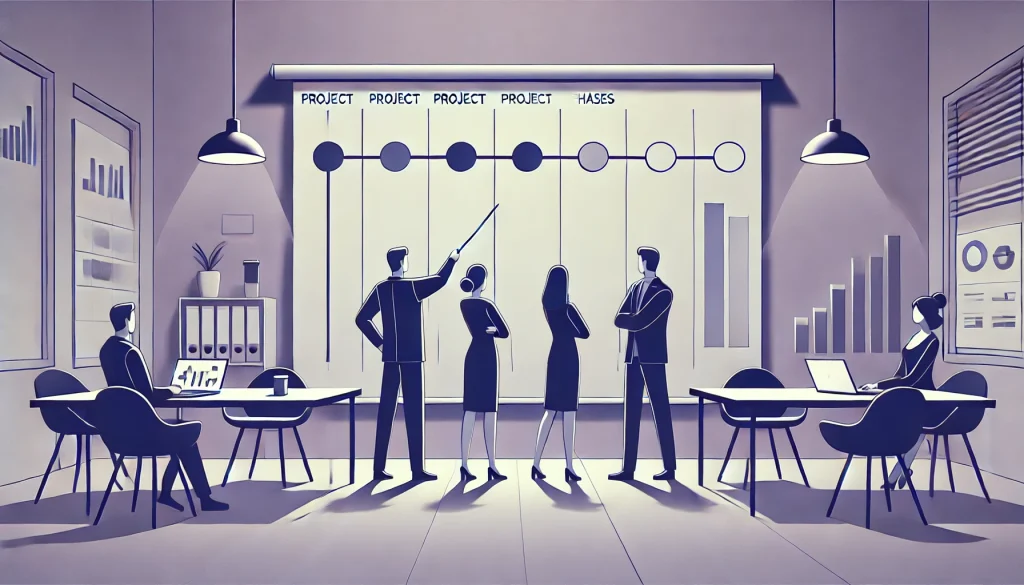
“Can you have this done by next month?” Maybe. But should you? Rushing design is like rushing architecture – you’ll pay for it later.
The 5 Phases of a Typical UI/UX Project (and Their Timelines)
1. Discovery & Research (2-4 weeks)
Stakeholder interviews, user research, competitive analysis, defining the problem and success metrics.
2. Wireframing & Prototyping (3-6 weeks)
Information architecture, user flows, low-fidelity wireframes, interactive prototypes.
3. Usability Testing & Iteration (1-2 weeks)
Testing prototypes with real users, gathering feedback, making improvements.
4. Visual Design (UI) & Style Guide (2-4 weeks)
High-fidelity designs, creating a design system, ensuring brand consistency.
5. Handoff & Support (1-2 weeks)
Developer handoff documentation, design QA during development, final refinements.
Sample Timeline: A 10-Screen Mobile App
Total: 10-14 weeks (about 3 months)
This assumes a focused scope, timely client feedback, and no major pivots. Add 20-30% buffer for reality.
Sample Timeline: A Complex B2B Platform
Total: 4-6+ months
For enterprise software with multiple user roles, complex workflows, integrations, and stakeholder management, don’t expect miracles. Quality takes time.
The #1 Thing That Delays a Project (Hint: It’s You)
Let’s be honest: the biggest bottleneck is usually client feedback. Agencies send you wireframes on Monday. You finally review them on Friday. Your CMO adds new requirements the following Tuesday. Your CEO is traveling and can’t approve until next week.
Here’s the truth: if you want your project done in 12 weeks, you need to commit to same-week turnarounds on feedback. Block time on your calendar. Empower one person to make decisions. Your agency can’t move forward without you.
Before You Sign: The Contract & Deliverables Checklist

Contracts are boring until something goes wrong. Then they’re everything.
Your Contract (SOW) Must-Haves
Clear Scope of Work: What exactly is included? How many screens? How many rounds of revisions?
Payment Milestones: When do you pay, and what triggers payment? Typical structure: 30% upfront, 30% at mid-point, 40% at completion.
IP Ownership: You should own all design intellectual property upon final payment. This should be explicitly stated.
Feedback Rounds: How many rounds of revisions are included? What happens if you want more?
Termination Clause: How can either party end the contract? What happens to deliverables and payments?
Timeline & Delays: What happens if the agency misses deadlines? What happens if you delay feedback?
Confidentiality: Both parties should sign NDAs if you’re sharing sensitive business information.
The Deliverables Checklist: What Do You Actually Get?
Don’t assume. Ask for this list in writing:
- User personas
- User journey maps
- Information architecture diagrams
- Low-fidelity wireframes
- Interactive prototype (clickable, not just static screens)
- High-fidelity UI designs (usually in Figma)
- Design system/style guide
- Developer handoff documentation
- Source files
Ask: “What format will I receive these in? Will my team be able to edit them after handoff?”
What’s the ROI? How to Measure the Success of Your UI/UX Project

Your CFO wants to know: “Why are we spending ₹15,00,000 on design?” Here’s how you prove it was worth it.
Business Metrics (The “Money” Metrics)
These directly impact revenue:
Increased Conversion Rate: If your e-commerce checkout redesign increases conversion from 2% to 3%, that’s a 50% increase in sales from the same traffic.
Higher Average Order Value: Better product recommendations and upselling through UX can increase how much each customer spends.
Lower Customer Acquisition Cost: If your onboarding UX improves and more trial users convert to paid, you’re getting more customers for the same marketing spend.
Reduced Churn: Better UX means users stick around longer, increasing lifetime value.
User Metrics (The “Happiness” Metrics)
These predict future business success:
Higher Task Completion Rate: Can users actually complete the core tasks your product was designed for?
Lower Drop-off Rate: Where are users abandoning flows? Good UX reduces these friction points.
Faster Time-to-Task: If users can complete a task in 30 seconds instead of 3 minutes, they’re having a better experience.
Better User Satisfaction (NPS) Scores: Are users recommending your product to others?
The “Hidden” ROI: Saving Money
Great UX doesn’t just make money – it saves it:
Reduced Development Rework: Catching UX problems in prototyping costs 10x less than fixing them in code.
Lower Customer Support Costs: If your product is intuitive, users call support less. Some companies save millions in support costs through better UX.
Faster Development: A clear design system means developers aren’t constantly asking “What should this button look like?” They just follow the system.
What Happens After “Handoff”?
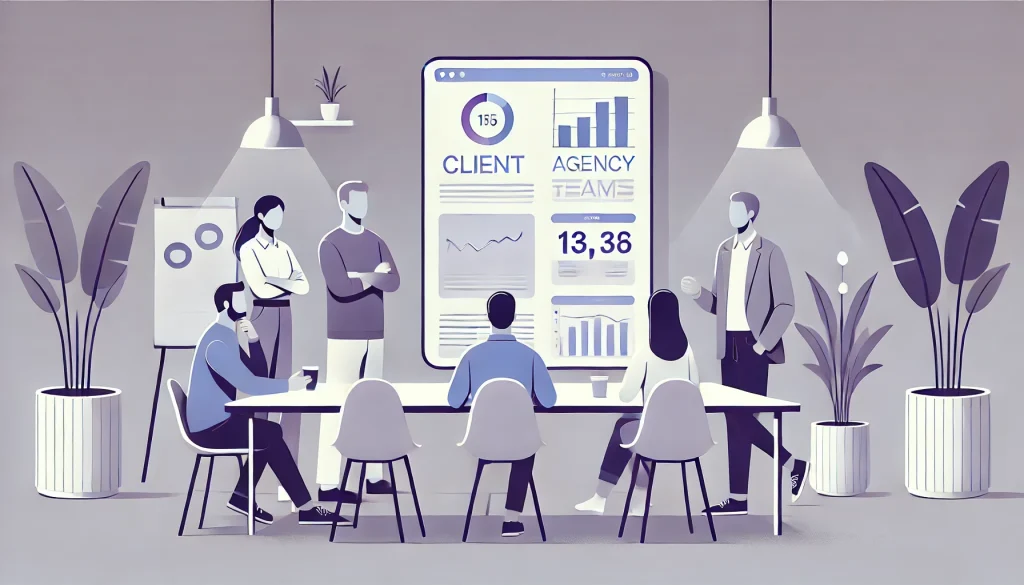
Most companies think the project ends at handoff. The best companies know that’s when the real work begins.
The Myth of the “Final” Handoff
Great design is never “done.” It’s a cycle of launch, learn, and iterate. Your v1.0 is based on research and best practices, but real user behavior will surprise you. Maybe users ignore your beautiful dashboard and only use one feature. Maybe your onboarding makes perfect sense to you but confuses actual users.
The best agencies want to see how users actually interact with their designs and make it better.
Types of Post-Launch Support to Ask For
- Design Support: The dev team has questions during implementation. A button state is unclear. An edge case wasn’t covered in the designs. Having the original designer available prevents guesswork.
- Iterative Design Retainer: A bank of monthly hours for continuous improvement. You analyze user behavior, identify friction points, and the agency designs solutions. This is how good products become great.
- Analytics & Optimization: The agency helps you set up proper analytics, reviews heatmaps and session recordings with you, and suggests data-driven design improvements.
- Feature Roadmap Collaboration: As you plan new features, the agency helps you design them in a way that’s consistent with the existing experience.
Ask Them: “What Does Your Ideal Long-Term Partnership Look Like?”
Their answers will tell you everything. If they say “We deliver the files and move on to the next client,” they’re a vendor. If they say “We love staying involved, seeing how users respond, and continuously improving the product,” they’re a partner.
Finding the Right Fit: Agencies in Bangalore, Mumbai, and Beyond

Should you hire local? Does it matter in 2025?
Does Location Still Matter in 2025?
Mostly no, but sometimes yes. Remote collaboration tools are excellent now. Many successful projects happen entirely over Zoom and Slack. But for complex enterprise projects or when you’re doing intensive discovery workshops, having an agency you can meet in person can be valuable.
Consider: How hands-on do you want to be? Do you work better in person? Is your team distributed already?
A Quick Look at India’s Top UI/UX Hubs
Bangalore: India’s tech capital. Agencies here often specialize in SaaS products, B2B platforms, and cutting-edge tech. The density of tech talent means you’ll find agencies that truly understand product design.
Mumbai: The financial and media hub. Strong in FinTech, media platforms, entertainment apps, and consumer brands. Agencies here often have sharp business thinking alongside design skills.
Pune: Growing startup and B2B scene. Good for enterprise software, B2B SaaS, and companies that want quality without Mumbai/Bangalore pricing.
Delhi NCR (Gurgaon/Noida): Corporate and enterprise focus. Agencies here often work with large companies, government projects, and established brands.
Hyderabad & Chennai: Emerging hubs with strong technical talent. Growing design communities with competitive pricing.
Need to find an agency in your city? Browse our curated lists of top agencies to find local design partners.
The Big Takeaway
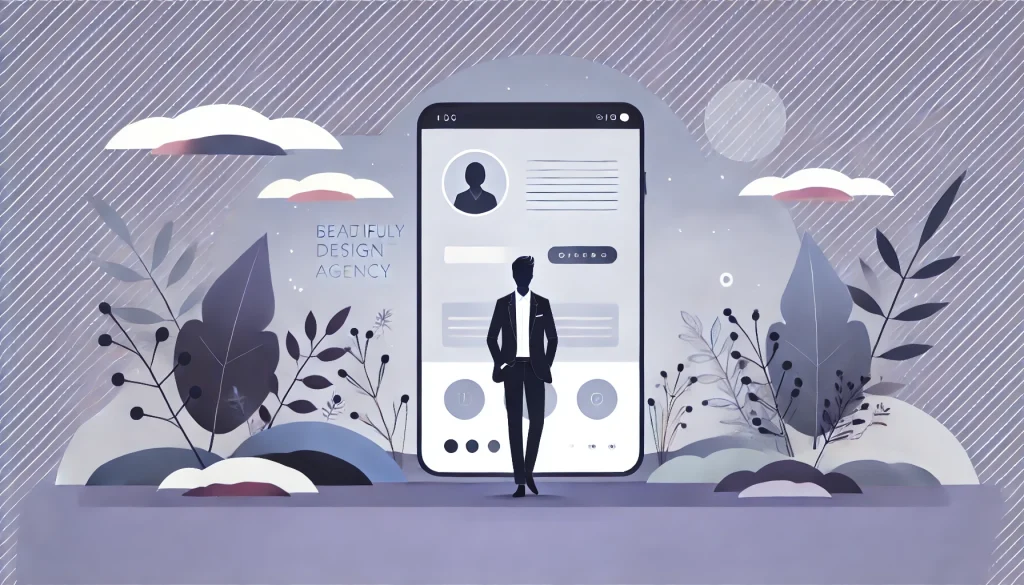
Hiring a UI/UX agency in India isn’t just about “getting a design.” It’s about finding a partner who will challenge you, champion your user, and connect design directly to your business goals.
The wrong agency will give you pretty screens that don’t solve real problems. The right agency will ask uncomfortable questions, push back on bad ideas, and design experiences that measurably improve your business.
The right agency is an investment that pays for itself, not an expense. When your conversion rate increases by 40%, when your customer support tickets drop by half, when users start calling your product “so easy to use” – that’s when you’ll know you chose well.
Feeling more confident? If you’re ready to see what a true design partner looks like, let’s talk. See our work here.
FAQs
1. How do I hire the right UI/UX agency?
Be clear about your problem, study their case studies for process and outcomes (not just visuals), and have a chemistry call. Agencies that ask tough questions are usually the right partners.
2. What questions should I ask before hiring?
Ask about past failures, who will work on your project, how they handle disagreement, their research process, how they make trade-offs, how they measure success, and what the client relationship looks like after launch.
3. How much does a UI/UX agency in India cost?
- Small projects: ₹2–5 lakhs
- Medium apps: ₹6–18 lakhs
- Complex platforms: ₹25 lakhs+
Costs vary by complexity and agency expertise.
4. What’s the typical UI/UX process?
Discovery → Research → Design & Prototyping → Testing → Visual Design & Handoff. Timelines range from ~10 weeks to 6+ months.
5. How long before I see results?
Designs come within 4–6 weeks. Real business impact takes 1–3 months post-launch, once enough user data comes in.
6. UI/UX agency vs. Product design agency?
UI/UX = research + experience + interface.
Product design = all of the above + business strategy, feature prioritization, and long-term product thinking.
7. Do I own the design IP?
Yes, as long as your contract states full IP transfer on final payment. Reputable agencies do this by default.
8. What is a design sprint, and do I need one?
A 5-day process to validate ideas quickly. Useful for new product ideas, alignment issues, or high-stakes decisions. Not required for every project.
9. How do you handle user testing in India’s diverse market?
A good agency recruits users across cities, income groups, and languages, and conducts research in regional languages. Only testing with urban English-speaking users is a red flag.



